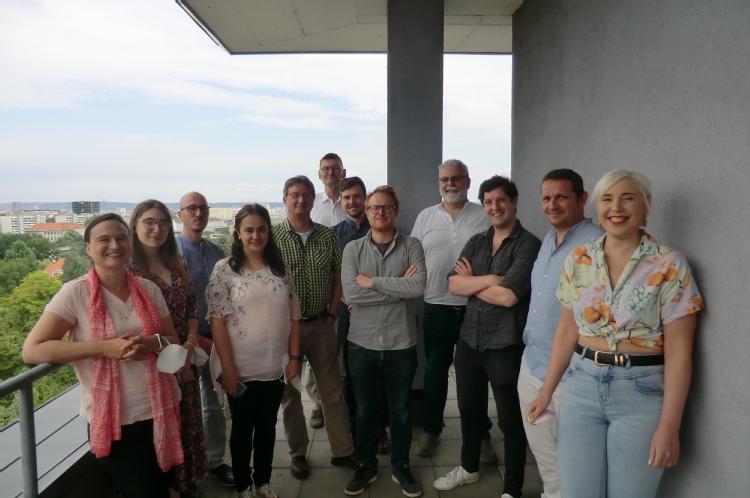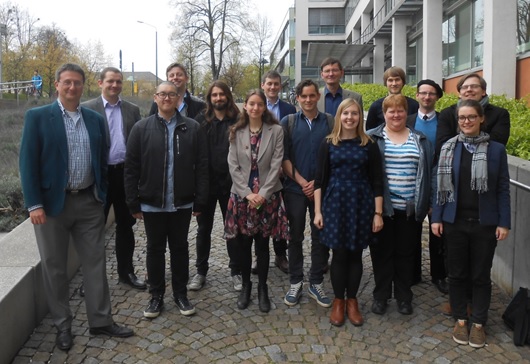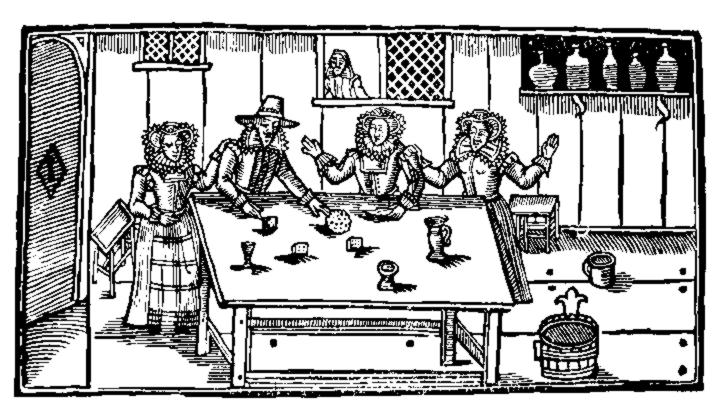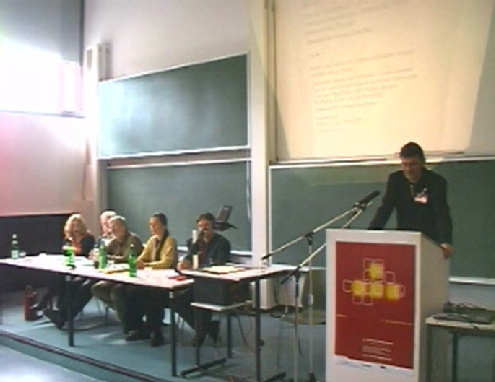Dresden-Warwick Exchanges
WARWICK-IN-DRESDEN 2022

Prof. Dagmar Ellerbrock (Dresden), Imogen Knox (PGR, Warwick), Dr Johannes Schütz (Dresden),
Dr Aysu Dincer (Warwick), Prof. Beat Kümin (Warwick), Prof. Gerd Schwerhoff (Dresden),
Dr des. Jan Siegemund (Dresden), Prof. Tim Buchen (Dresden), Dr Jonathan Davies (Warwick),
Dr Tom Lowman (Warwick), Dr Alexander Kästner (Warwick), Wiebke Voigt (PGR, Dresden).
From 13-15 July 2022, five members of the Warwick History department visited their Dresden colleagues to explore shared interests in the history of violence and to discuss future collaboration opportunities under the EUTOPIA university alliance umbrella.
Following individual presentations on related research in different regions and periods, there were introductions to the Warwick-based Centre for the Study of the Renaissance, History of Violence Network & My-Parish platform as well as Dresden's collaborative research centre on Invectivity. Participants also enjoyed guided tours through the Military History Museum and the city.
We gratefully acknowledge the support of Warwick's International Strategy team and look forward to the return 'Dresden-in-Warwick' visit in March 2023.
SECOND PGR WORKSHOP 2021
Media and Public (Dis)Order: A virtual workshop for early modernists at Dresden & Warwick
(Held on Blackboard Collaborate, 29-30 March 2021)
Co-organized by Maria Tauber (Warwick), Jan Siegemund (Dresden) & Benjamin Seebröker (Dresden)

The digital workshop stands in the 20-year-old tradition of exchange between postgraduate researchers of early modern history from the Technische Universität Dresden and the University of Warwick – this time complemented by participants from the University of Rostock.
Its aim was to bring together early career researchers from both sides of the channel to compare current historiographical trends in theories and methods. All presentations were broadly connected to the topic of ‘Media and Public (Dis)Order’, encompassing different periods of time, regional areas and contexts.
Over the course of the two-day workshop, the entire Early Modern era was covered, from the 15th to the beginning of the 19th century, and the topics ranged from the relationship between religion and state, print media, material culture to community politics. The workshop followed an open concept of media which incorporates oral, written and symbolic forms of communication – including everything from ceremonies to printed books. [See the full workshop report by Imogen Knox & Felipe Mello published on the H/SOZ/KULT platform.]
Introductory papers, short presentations and discussions led to a lively exchange. The comparison of the projects as well as the discussions showed the very ambiguous relationship between media and public order. On the one hand, media could threaten the public order – the most prominent example being the reformation as a movement for which the use of the new print media was of great importance. As the reformation is extensively researched in Germany, this particular perspective on media as an agent of change appears more prominent on the continent. On the other hand, print media could be used by authorities to help maintain the public order. Moreover, forms of media commonly regarded as disturbers of peace and good order, like libels and pamphlets, could, from the perspective of their producers, be seen as means to criticise wrongdoings of authorities and thereby (re)construct social order.
The changing of the media landscape was a prominent topic throughout the presentations and discussions. Interestingly, lines of tradition were also highlighted, mostly concerning the persistent importance of ‘older’ forms of media, such as manuscripts, which, despite the availability of print, were still widely used to shape public opinion. In some cases, the emergence of print media even stimulated the production of more traditional media.
The rich discussions showed how research on media and public communication is influenced by the availability of primary sources, which in some cases differs between the UK and Germany. Another difference between the two historiographic traditions lies in the debate about the emergence of the ‘public sphere’. Here, a longstanding, partly exhausted discussion in Germany faces a comparatively new one in the UK.
At the end of the digital workshop, participants expressed their wish to continue the cooperation and meet in person once safe international travel resumes.
INAUGURAL PGR WORKSHOP 2016
Theories and Practices of Writing Early Modern History in England and Germany
(Workshop at Dresden on 23 April 2016)
Organisation: Franziska Neumann, Gerd Schwerhoff, Technische Universität Dresden; Beat Kümin, University of Warwick
English Report by Benjamin Seebröker (Dresden)

Participants of the
Joint Dresden-Warwick PGR Workshop in April 2016. Picture: J. Nivala
The workshop, supported by the “IPID4all” programme of the DAAD and held in Dresden on 23rd of April, provided a great opportunity for young researchers and PhD candidates of the University of Warwick and the Technical University of Dresden to discuss their current projects and to further foster the prosperous partnership between their two universities. The workshop focussed on both scholarly discussions of the respective projects, and above all the exchange of experiences of distinct research cultures. Therefore, the participants discussed the English and German projects on the basis of previously circulated essays, each introduced by a commentary at the beginning of each session. Short reflections by GERD SCHWERHOFF (Dresden) and BEAT KÜMIN (Warwick) on the doctoral processes in Germany and England respectively showed both similarities and differences regarding the structure, possibilities and challenges of each system. Beyond doubt, these unequal frameworks have an impact on the research and writing practices of the doctoral candidates, which was again thrown into sharp relief during the workshop.
In the first section, JOHN MORGAN (Warwick) presented a paper in which he proposed to link social and environmental history, revealing interdependencies between the environment and humans. He illustrated the benefits of such an approach through the example of the flood-prone fenlands and marshlands near the rivers Welland and Severn, which have to be seen, according to Morgan, as “socio-natural sites”. By explaining how the drainage systems were managed at the level of the parish, he could show that social factors like the unequal distribution of power or wealth had an impact on the environment itself and on the environmental vulnerability of certain inhabitants living in flood-prone lands. Hence, early modern landscapes should not be seen as solely shaped by natural events but also by human actions and social structures. Morgan criticised that this fact is often neglected in contemporary debates about environmental restorative programmes which aim at the restoration of landscapes to an allegedly undisturbed ‚natural’ pre-industrial status.
SEBASTIAN FRENZEL (Dresden) gave an insight in his current research project entailing political communication in early modern Ulm. He focused on the use of political language and certain topics like sin, divine wrath, and the promise of ‘Glückseeligkeit’ (wealth and welfare). In the first part of his examination, Frenzel dealt with the prefaces of the city council’s decrees in which the city’s rulers tried to legitimise their decisions in different ways. The rhetorical phrases that can be found in these prefaces were by no means random but vital for the moral justification of the decrees. In order to decode the social meaning of these justifications in the second part of his project, Frenzel applied a language-in-context approach to analyse the processes of how the decrees were created, published, and enacted. He emphasised that the absence or presence of certain individuals played a crucial role within the formalised act of the proclamation of an order, and that lampoons, petitions, or other forms of reactions from the city’s inhabitants are also important to understand the legal culture of Ulm.
In his commentary on both papers, ALEXANDER KÄSTNER (Dresden) pointed out that John Morgan could benefit from Frenzel’s approach by taking a closer look at the (political) language and terms used, for example in complaints of parishes which shaped the debates about the drainage system. Furthermore, in the case of Sebastian Frenzel, it might be worth considering tensions in respect of economic, social, and symbolic resources that were at stake in the process of law-making.
As part of the second section ANASTASIA STYLIANOU (Warwick) stated that the similarities between early modern Protestant and Catholic concepts of martyrdom should not be overestimated. Although the martyrologies evolved in dialogue and therefore should be examined together, the authors of Protestant and Catholic martyrologies used certain motifs and themes in different ways and for different purposes. Concentrating on the motif of ‘blood’ as an essential element in both confessions’ narratives of martyrdom, Stylianou analysed the motif’s function and how its use contributed to the establishment of confessional identities in early modern England. She argued that Protestant narratives are distinguished by their novel focus on the perpetrators of religious persecution. As a consequence, a language of ‘blood’ is often used to describe the Catholic clergy, who are presented as ‘bloodthirsty’ and ‘blood-stained’. Catholic martyrologies, however focus almost exclusively on the blood of the victims, which – in contrast to the Protestant belief – has sanctifying powers and a sacrificial function for the community. Furthermore, Stylianou demonstrated that the Catholic concept of martyrdom is closely related to medieval beliefs and traditions, and thus should be seen as a continuation of, rather than a break from, the medieval legacy.
CHERYL PETREMAN (Dresden) investigated forms of delinquency in the Imperial Free City of Nördlingen in the second half of the sixteenth century by analysing the so-called ‘Urfehdebücher’. Her paper focused on cases of drunken men. In most of the cases in Petreman’s sources, drunkenness was related to various delicts such as defamation, damage of property, or physical injury, and therefore it was often used as an excuse, although it did not necessarily lead to a decrease of one’s sentence. The punishment of the perpetrators ranged from fines or captivity for several days to banishment from the taverns or sometimes even from the city. As they were no longer allowed to visit taverns, drunkards were prevented from drinking in public and from repeatedly causing trouble. Nevertheless, they were never forced to give up drinking alcohol per se. All in all, Petreman came to the conclusion that the city council had been quite lenient in their punishment.
Regarding the paper of Anastasia Stylianou, ERIC PILTZ (Dresden) suggested that Anabaptist constructions of martyrdom could complement the project, and that it might be helpful to see the use of the language in the Protestant martyrologies in the wider context of other polemical writings. Piltz similarly felt that a contextualisation of individual cases would be helpful for Cheryl Petreman. He suggested she could investigate further the individual delinquents and their living circumstances, as this presumably had an impact on the judgement.
In her study of material culture in early modern England, RACHAEL MORTON (Warwick) examined the interaction and communication between producers and consumers of metalware in order to establish a further understanding of how the quality of certain products has been defined. With the expansion of the metalware trade since the late seventeenth century the guilds had to adapt to effectively regulate the quality of commodities. Therefore, it was increasingly necessary for consumers to report poor quality products. The reputation of a producer or a guild became vital to their success and their ability to sell their products. Consequently, producers developed sophisticated marketing strategies, and utilised advertisements, trade cards and the marks on metalware, to open up new forms of communication between producers and consumers. Morton pointed out that it was not only the tangible aspects of a product that was crucial for the perception of its quality, such as its durability, but it was also intangible qualities, such as the reputation of the producer or the location where the product was made. Therefore, quality was not simply defined by regulators but was negotiated by a wider audience.
FRANZISKA NEUMANN explored how various discourses in the fifteenth and sixteenth century about nature, society, and mining processes in the region of the Ore Mountains could be linked together. There were humanist debates about the relationship of humans and their environment and whether mining can be seen as ‘raping’ (and as a consequence, destroying) the earth or not. Simultaneously, discussions encompassing the order of mining and mining communities, and thus about the relationship between humans and environment, took place in the political sphere. As metals and minerals were seen to be gifts from God, all mining activities were seen to contribute to the welfare of society. This conviction led to the concept of the ‘gemeiner Bergbaunutz’ (‘bonum commune’) on which basis the mining ordinances (‘Bergordnungen’) were developed. These ordinances regulated mining and were the foundation for the Saxon mining administration. Neumann, while being well aware of the problems of such a proposal, suggested that humanist discourses and efforts to provide order within society could be connected through the concept of social disciplining developed by Gerhard Oestreich.
Finally, similar to Franziska Neumann, BENJAMIN SEEBRÖKER conducted a study of the early modern Ore Mountains. In contrast, he further investigated the urban identities of the mining towns. Seebröker argued against the supposition that mining shaped these identities to a great extent, as the results of his research turned out to be more diverse. After analysing various town chronicles it became clear that there are two different kinds of urban identities presented in these texts. Some chronicles only marginally mention mining and instead focus on town buildings such as churches, but others place mining activities at the centre of their narrative and consider mining as vital for the whole community of the mining town. According to Seebröker, these differences could be traced back to the authors of the chronicles. Whereas the town-centric texts were written by scholars, the authors of the mining-centric texts were Protestant pastors. The chronicles of the pastors were influenced by the ‘Bergpredigten’, which were sermons that were written to address the needs of the miners, and so emphasised the importance of their work. Many of the ideas in the sermons were also found in the pastor’s town chronicles, therefore their texts concentrated on mining as the basis for the mining town.
MATTHIAS BÄHR’s (Dresden) commentary on the paper of Rachael Morton underlined the need to be aware of the different discourses about quality that might have existed in different parts of society. Similarly, Benjamin Seebröker had to consider that different town chronicles might have addressed different audiences, which could have affected the identities presented in those texts.
The final discussion focused on similarities and differences between the two research cultures. It became obvious that these cultures to a significant extent have different aims and foci, and thus are “not always on the same stage of the cycle of concepts”, as Beat Kümin stated. Whereas the so-called ‘confessionalisation’ thesis is currently a quite popular research topic in England, it has already been heavily researched in German-speaking countries over the last decades. Interestingly, it seems to be the other way round in the context of the material culture. In general, the discussions revealed once again that major explanatory models, like the process of ‘confessionalisation’ have to be seen critically. Regarding Catholic and Protestant martyrologies (on which Stylianou is working), for example, it has to be questioned how far the two confessions can be clearly distinguished from each other. The concept of ‘social disciplining’ was also discussed intensely. John Morgan determined that most regulations related to the management of drainage systems in the fenlands were developed at a parochial level. Consequently, law-making in these regions could be seen as a bottom-up process, which points in another direction than law-enforcement by the territorial governments. In the case of Neumann’s attempt to connect the different discourses about humans and their environment, Matthias Bähr suggested in his comments that it could be advisable to consider other possible explanations, such as the emerging capitalistic system in the Ore Mountains, that made it necessary to organise the mining activities, instead of referring to ‘social disciplining’ as this is a problematic concept in itself.
Despite the wide range of projects presented, the lively discussions showed many points of overlap between the different research topics, and the participants demonstrated great potential to benefit from each other’s knowledge and perspectives. The regulation of social life, the perception of nature, as well as interactions between humans and their environment, played essential roles in almost every paper. In addition, it was discovered that themes of religion and (religious) identities were present in many of the researchers’ sources, and therefore could be the subject of profitable discussion. All in all, every attendee of the workshop agreed that further exchange between researchers of the two countries would be very useful. The workshop was successful in bringing together scholars and providing an open atmosphere to host inspiring and fruitful conversations, not only about the projects presented, but also about the conditions of the different doctoral programmes and research cultures. It would be much appreciated if the Universities of Dresden and Warwick maintained future dialogue.
'SOCIAL SITES' NETWORK 2005-8

A seventeenth-century tavern scene [from the Roxburgh Ballads]
The international network 'Social Sites - Öffentliche Räume - Lieux d'échanges 1300-1800' was established among members from the Universities of Dresden, Paris I Panthéon-Sorbonne and Warwick in March 2003 and supported by an 'Academic Collaboration' grant from the Leverhulme Trust (April 2005 to March 2008). This initiative investigated perceptions of space in premodern Europe, with reference both to contemporary awareness and modern theoretical approaches (website).
HISTORIKERTAG PANEL 2004

'Die grosse Welt im kleinen Raum' - this session at the national conference of German historians at the University of Kiel in September 2004, chaired by Gerd Schwerhoff (Dresden), investigated social interactions in public houses, market squares and other sites of exchange. Papers were delivered by Jochen Hoock & Wolfgang Kaiser (Paris I), Beat Kümin (Warwick) and Susanne Rau (Dresden), with a comment by sociologist Martina Löw (Darmstadt). Proceedings were published in a volume dedicated to churches, taverns and markets in the Zeitsprünge series in 2005.
